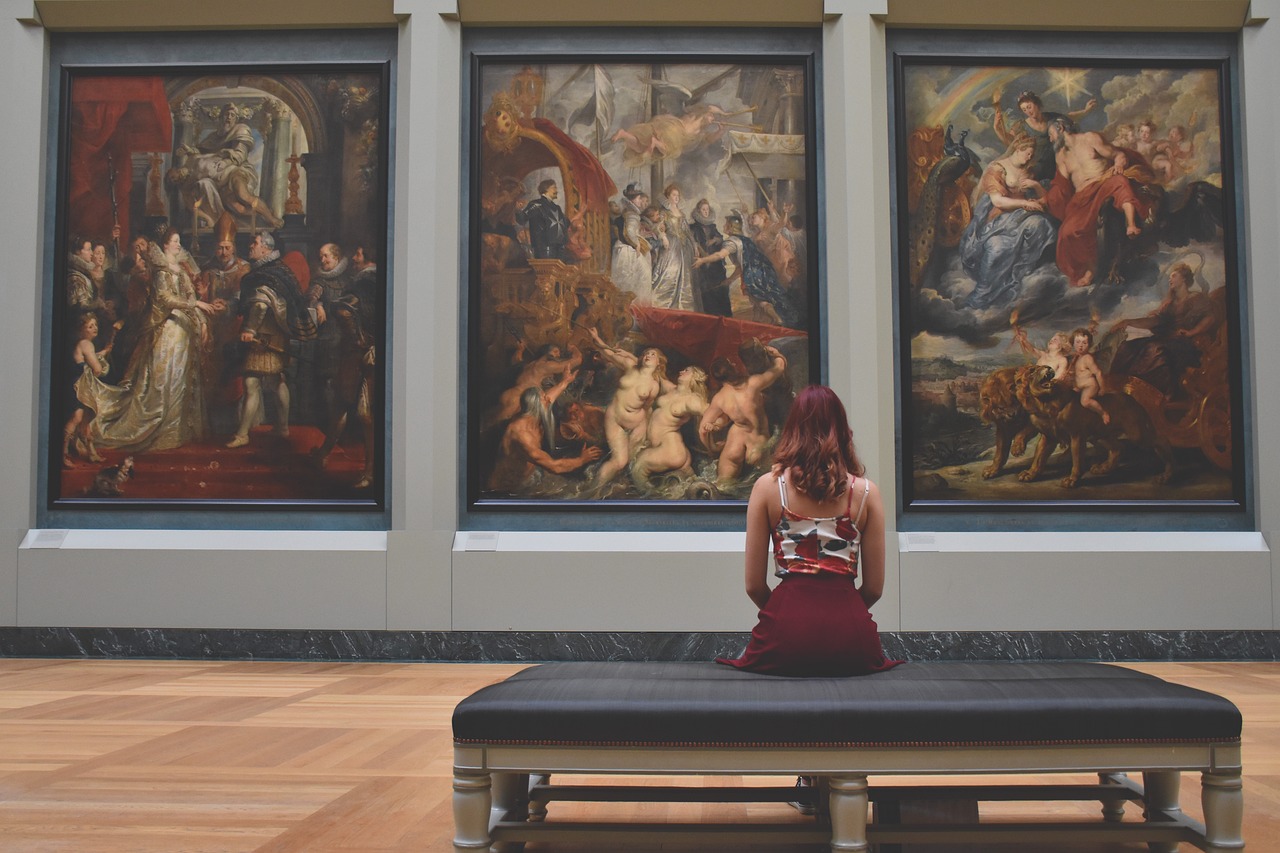Table of Contents
- Museums: Windows into History and Culture
- The Metropolitan Museum of Art
- The Museum of Modern Art (MoMA)
- The American Museum of Natural History
- The Guggenheim Museum
- The Whitney Museum of American Art
- Theaters: Stages for World-Class Performances
- Broadway Theaters
- Off-Broadway and Off-Off-Broadway
- Lincoln Center for the Performing Arts
- Galleries: Exploring Contemporary Art
New York City, often hailed as the cultural capital of the world, is a treasure trove of artistic expression and creativity. Its diverse and dynamic cultural scene is anchored by an impressive array of museums, theaters and galleries. In this article, we will delve into the rich tapestry of cultural institutions that make New York a global hub for the arts, inviting both residents and visitors to explore its wealth of artistic treasures.
New York City, the city that never sleeps, is not only an economic and political hub but also a true mecca for culture and the arts. From its iconic skyline to the hidden gems nestled in its diverse neighborhoods, the city’s cultural scene is a testament to human creativity and expression. Let’s embark on a journey through the vibrant tapestry of cultural institutions that make New York a global epicenter for the arts, extending an open invitation to both residents and visitors to explore its boundless artistic treasures.
1. Museums for Every Taste: New York’s museum scene is nothing short of awe-inspiring. The Metropolitan Museum of Art, with its vast collection spanning centuries and continents, is a cultural epicenter in itself. The Museum of Modern Art (MoMA) showcases the evolution of contemporary art, while The Guggenheim’s iconic spiral architecture is a work of art in its own right. For a dose of history and science, the American Museum of Natural History and the Intrepid Sea, Air & Space Museum are must-visits. Art enthusiasts can revel in the Whitney Museum of American Art and the Frick Collection, among others. The city’s museums offer a diverse range of experiences, from ancient artifacts to cutting-edge contemporary art.
2. Broadway: The Theater Capital: No discussion of New York’s cultural scene is complete without mentioning Broadway. The dazzling marquees of Times Square light up the night with promises of captivating performances. The world’s finest actors, directors and playwrights converge here to tell stories that run the gamut from heartwarming to thought-provoking. Whether you’re a fan of musicals, dramas or experimental theater, Broadway has a show for every taste.
3. Galleries and Emerging Artists: Beyond the grandeur of museums, New York boasts a thriving gallery scene. Chelsea’s gallery district is a haven for contemporary art lovers, with galleries showcasing the works of emerging and established artists. The Lower East Side is known for its eclectic mix of galleries, while the Brooklyn art scene continues to gain recognition for its avant-garde exhibitions.
4. Music and Performance: Carnegie Hall, Lincoln Center and Radio City Music Hall are just a few of the iconic venues that host world-class performances ranging from classical music to rock concerts and everything in between. The city’s vibrant music scene extends to intimate jazz clubs in Harlem, underground punk venues in the East Village and open-air summer concerts in Central Park.
5. Literary Havens: New York City has long been a literary mecca, inspiring countless authors and poets. The New York Public Library, with its majestic reading rooms and historic collections, is a haven for bookworms. Independent bookstores like The Strand and McNally Jackson offer cozy corners to explore new literary adventures.
6. Dance and Movement: The Alvin Ailey American Dance Theater and the New York City Ballet are just two of the renowned dance companies that call the city home. From classical ballet to contemporary dance, the city’s stages come alive with graceful performances.
7. Festivals and Celebrations: Throughout the year, New York hosts a plethora of cultural festivals celebrating diverse heritages, from the West Indian American Day Carnival to the Lunar New Year Parade. These festivals provide a unique opportunity to experience the city’s rich tapestry of cultures and traditions.
8. Immersive Experiences: Beyond traditional institutions, New York offers immersive experiences like Sleep No More, where audiences become active participants in a theatrical narrative and the interactive wonders of Meow Wolf’s Convergence Station.
In every corner of this dynamic city, artistic expression flourishes. Whether you’re a lifelong resident or a first-time visitor, New York invites you to discover its cultural treasures, celebrate human creativity and find inspiration in its myriad forms. The city’s cultural institutions are not mere repositories of art; they are vibrant spaces that spark dialogue, ignite imaginations and unite people from all walks of life in a shared appreciation for the beauty and power of the arts. So, embark on this cultural journey and let New York City’s artistic spirit illuminate your path.
Don’t stop here; you can continue your exploration by following this link for more details: Strategies applied by different arts and cultural organizations for …
Museums: Windows into History and Culture
New York City’s museums are renowned for their depth and diversity, offering visitors a glimpse into the vast panorama of human history, art and culture. Here are some of the city’s most iconic museums:
“New York City’s museums are renowned for their depth and diversity, offering visitors a glimpse into the vast panorama of human history, art and culture. Here are some of the city’s most iconic museums:
The Metropolitan Museum of Art: An epitome of art and culture, The Met boasts an extensive collection spanning 5,000 years, from ancient civilizations to modern masterpieces. Visitors can immerse themselves in art, sculptures, textiles and more.
The Museum of Modern Art (MoMA): MoMA is a haven for contemporary art enthusiasts, featuring a remarkable collection of modern and contemporary artworks, including renowned pieces by Van Gogh, Picasso and Warhol.
The American Museum of Natural History: Step into a world of natural wonders at this iconic museum. From dinosaurs to celestial bodies, the exhibits offer a captivating journey through Earth’s history and beyond.
The Guggenheim Museum: Designed by Frank Lloyd Wright, the Guggenheim is an architectural marvel. Inside, you’ll find a stunning collection of modern and contemporary art, displayed in a unique spiral structure.
The Whitney Museum of American Art: Celebrating American artists, the Whitney showcases a diverse range of contemporary and modern American art. The museum often features rotating exhibitions that highlight the nation’s artistic creativity.
The Ellis Island National Museum of Immigration: Delve into the immigrant experience and the history of American immigration at Ellis Island. Discover the stories of those who came to America seeking hope, dreams and a new life.
The 9/11 Memorial & Museum: Commemorating the events of September 11, 2001, this museum offers a moving and educational experience, honoring the lives lost and the resilience of the human spirit.
These museums stand as cultural landmarks, inviting exploration and providing a deeper understanding of the diverse tapestry of human civilization. Whether you’re an art aficionado, history buff or simply curious, these institutions offer an enriching and enlightening journey through the ages.”
If you’d like to dive deeper into this subject, there’s more to discover on this page: Schomburg Center for Research in Black Culture | The New York …

The Metropolitan Museum of Art
Known simply as “The Met,” this colossal institution houses over two million works spanning five millennia of art history. From ancient Egyptian artifacts to European masterpieces and contemporary art, The Met is a cultural epicenter that invites exploration.
Nestled within the heart of the bustling metropolis, The Met stands as a testament to the enduring power of human creativity. Known simply as “The Met,” this colossal institution houses over two million works spanning five millennia of art history. From ancient Egyptian artifacts that whisper the secrets of civilizations long past to European masterpieces that have transcended centuries and contemporary art that challenges our notions of the present, The Met is not just a museum; it is a cultural epicenter that invites exploration.
As you step into The Met’s grand entrance, you are greeted by an overwhelming sense of awe and wonder. The sheer scale of the museum is astounding, with its halls and galleries stretching like a labyrinthine journey through time and space. Each room is a portal to a different epoch, inviting you to wander through the annals of history, guided by the strokes of a thousand brushes and the chisels of countless sculptors.
In the Egyptian wing, you can marvel at the intricate hieroglyphics adorning the sarcophagi, while mummies silently narrate tales of lives lived in an ancient Nile valley. As you move on to the European art section, you find yourself surrounded by luminous canvases that tell stories of love, war and the human condition. The Met’s collection of European masterpieces includes works by renowned artists like Rembrandt, Van Gogh and Monet, who continue to inspire generations with their unparalleled skill and innovation.
Venturing into the contemporary art galleries, The Met bridges the gap between past and present, offering a dynamic reflection of our ever-evolving world. Here, you’ll encounter thought-provoking installations, boundary-pushing sculptures and paintings that challenge conventional perspectives, beckoning you to engage with the issues and ideas of our time.
But The Met is more than just a repository of art; it’s a living, breathing institution that fosters a sense of cultural exchange and exploration. The museum hosts a plethora of events, from lectures by renowned scholars to interactive workshops that allow visitors to unleash their own creative potential. The Met’s educational programs aim to bridge the gap between generations, making art accessible and relevant to people of all backgrounds.
The Met’s sprawling garden, a sanctuary within the urban jungle, provides a tranquil space for reflection and contemplation. Here, you can sip a coffee, read a book or simply admire the lush surroundings while allowing the art you’ve encountered to percolate in your mind.
As day turns to night, The Met’s facade comes alive with a mesmerizing display of light and color, reminding us that art is not confined to the walls of a museum; it permeates the very essence of our existence. Known simply as “The Met,” this institution transcends time, welcoming all who seek to explore the rich tapestry of human creativity and expression and in doing so, it continues to be a beacon of inspiration for generations to come.
Looking for more insights? You’ll find them right here in our extended coverage: The Metropolitan Museum of Art
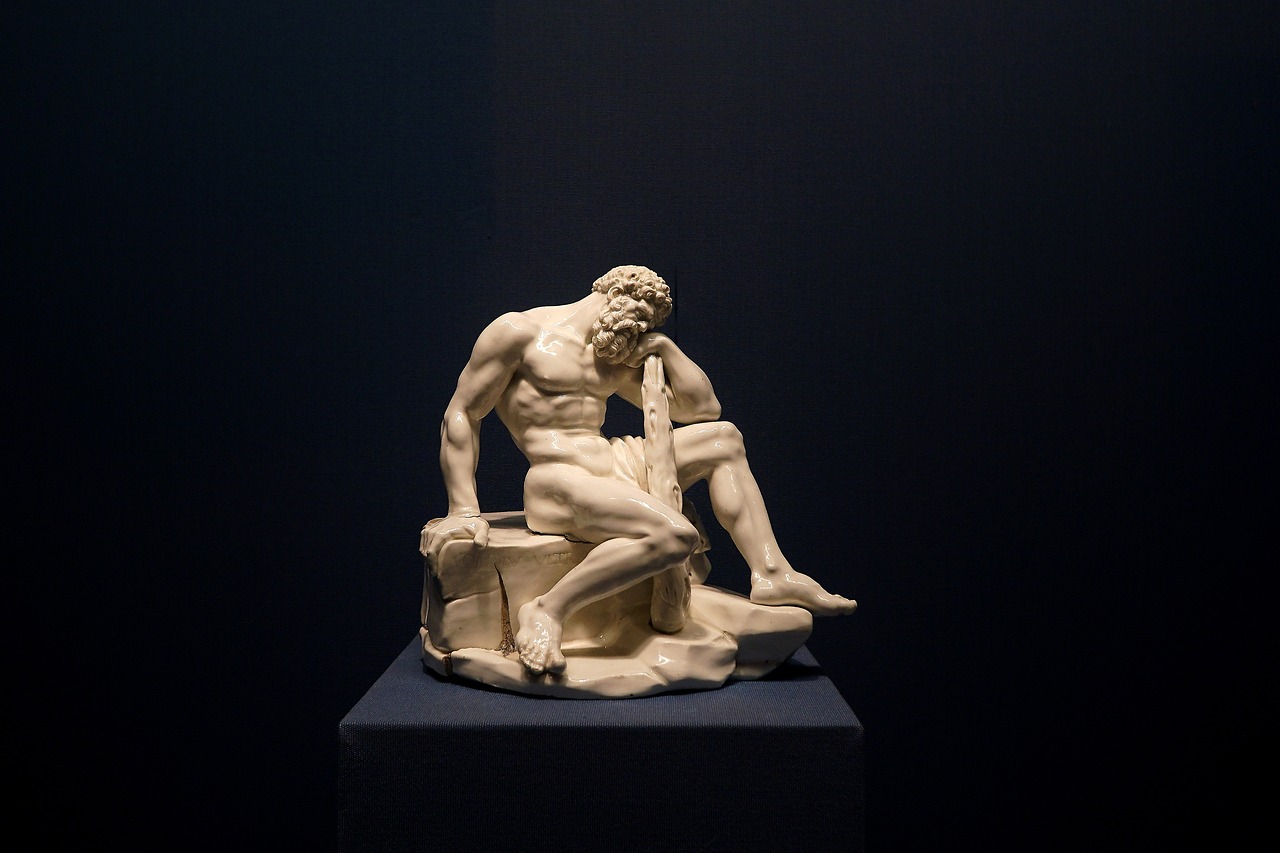
The Museum of Modern Art (MoMA)
MoMA showcases the evolution of modern and contemporary art with an extensive collection of paintings, sculptures and multimedia installations. It’s a haven for art lovers seeking to understand the ever-evolving world of artistic expression.
MoMA, the Museum of Modern Art, stands as an enduring beacon in the heart of New York City, inviting visitors into a mesmerizing realm where the past, present and future of art coalesce. This cultural gem is a testament to the transformative power of artistic expression, offering a kaleidoscope of experiences that illuminate the ever-evolving landscape of modern and contemporary art.
As you step through the museum’s iconic doors, you embark on a journey through time and creativity. MoMA’s extensive collection is a treasure trove of innovation, where paintings, sculptures and multimedia installations converge to narrate the compelling story of artistic evolution. From the groundbreaking works of early 20th-century pioneers like Picasso and Matisse to the cutting-edge installations of today’s visionary artists, MoMA’s galleries are a canvas of human imagination.
Walking through these hallowed halls, you’ll witness the profound shifts and revolutions that have defined modern art. You’ll trace the brushstrokes of artistic movements, from Cubism to Surrealism and witness how artists challenged conventions, shattered boundaries and redefined the very essence of what art could be. The juxtaposition of diverse artworks encourages contemplation and sparks dialogue, reflecting the dynamic nature of creativity itself.
MoMA is more than just a repository of art; it’s a living testament to the human spirit’s boundless capacity for innovation. Each visit unveils new dimensions of artistic expression, as the museum continually refreshes its exhibits to reflect the evolving cultural landscape. Whether you’re drawn to the bold strokes of a Jackson Pollock masterpiece, the surreal dreamscape of a Salvador Dalí painting or the immersive experience of a contemporary video installation, MoMA ensures that there’s something to captivate every artistic sensibility.
Beyond the art itself, MoMA is a haven for art lovers seeking to understand the profound and sometimes enigmatic forces that drive artists to create. It’s a place where you can delve into the stories behind the works, explore the creative processes and gain insight into the minds of the artists who dared to challenge conventions and redefine the boundaries of art.
But perhaps what makes MoMA most remarkable is its ability to inspire. It encourages visitors to view the world through a different lens, to embrace the unconventional and to recognize that creativity knows no bounds. It’s a place where you can find your own muse, whether you’re an artist or simply an appreciator of art and where the ever-evolving world of artistic expression unfolds before your eyes.
In essence, MoMA is a testament to the enduring power of art to transform, challenge and inspire. It beckons you to explore the vast expanse of human creativity, to witness the evolution of artistic expression and to discover the profound and often unexpected ways in which art can touch the soul. It’s a sanctuary for the curious, the dreamers and the seekers of beauty in all its forms, ensuring that every visit is a journey of wonder and discovery.
To expand your knowledge on this subject, make sure to read on at this location: Institutes and events | MoMA
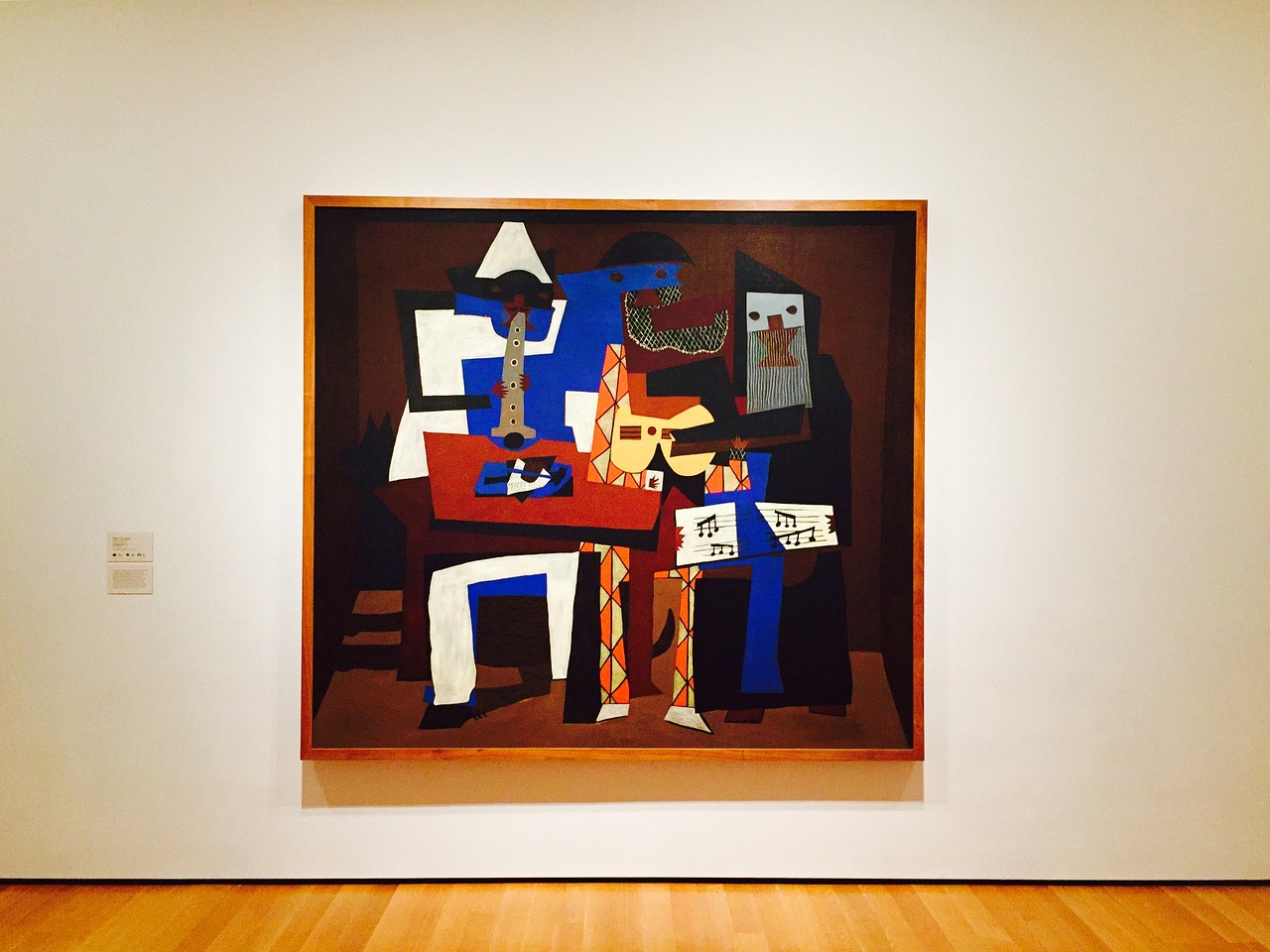
The American Museum of Natural History
This institution captivates visitors with its exhibits on natural history, anthropology and the cosmos. The iconic dinosaur skeletons and the mesmerizing Hayden Planetarium draw visitors of all ages.
This institution captivates visitors with its exhibits on natural history, anthropology and the cosmos. The iconic dinosaur skeletons and the mesmerizing Hayden Planetarium draw visitors of all ages.
Natural History: The museum’s natural history exhibits are a journey through the ages, taking you back to the prehistoric era when colossal creatures roamed the Earth. The dinosaur skeletons, including the famous Tyrannosaurus rex, are more than just fossils; they’re windows into a distant past that spark the imagination of young and old alike. As you stand in awe of these colossal specimens, you’re transported to a time when the world looked vastly different.
Anthropology: The museum’s anthropology exhibits offer a deep dive into the rich tapestry of human cultures and civilizations. From ancient Egyptian artifacts to indigenous art and artifacts from around the world, you can explore the diversity of human creativity and history. These exhibits not only educate but also inspire a sense of interconnectedness with people from different times and places.
The Cosmos: The Hayden Planetarium, nestled within the museum, is a gateway to the cosmos. Its state-of-the-art projection systems and immersive shows transport visitors on celestial journeys, from the surface of Mars to the depths of the universe. Whether you’re a budding astronomer or simply curious about the cosmos, the planetarium offers an unforgettable experience that fosters a sense of wonder about the universe.
Educational Programs: Beyond the exhibits, the museum offers a wide range of educational programs for all ages. From interactive workshops for kids to lectures and discussions for adults, there’s always an opportunity to learn and engage with cutting-edge scientific discoveries and insights.
Inspiring Future Scientists: For many young visitors, a trip to this museum can be a formative experience that ignites a passion for science and discovery. The museum’s dedication to education and outreach ensures that it plays a vital role in inspiring the next generation of scientists, researchers and explorers.
Community Engagement: The museum serves as a hub for community engagement, hosting events, festivals and exhibitions that celebrate diversity and cultural exchange. It’s a space where people from all walks of life can come together to explore the wonders of the natural world and the cosmos.
Ongoing Discoveries: The museum’s commitment to scientific research means that its exhibits are not static but ever-evolving. New discoveries and advancements are integrated into the exhibits, ensuring that each visit provides fresh insights and perspectives.
In summary, this iconic institution transcends being just a museum; it’s a place of wonder, education and inspiration. It connects us to the Earth’s ancient past, the rich tapestry of human cultures and the vastness of the cosmos. Whether you’re a curious child, a lifelong learner or a seasoned scientist, this museum invites you to explore, learn and dream. It’s a testament to the boundless curiosity of humanity and our unending quest to understand the world and universe around us.
Don’t stop here; you can continue your exploration by following this link for more details: Cultural Market Sector – AKRF

The Guggenheim Museum
Designed by Frank Lloyd Wright, the Guggenheim’s spiral architecture is as iconic as its collection of modern and contemporary art. The museum’s rotating exhibitions continually offer fresh perspectives on the art world.
Designed by Frank Lloyd Wright, the Guggenheim’s spiral architecture is as iconic as its collection of modern and contemporary art. The museum’s rotating exhibitions continually offer fresh perspectives on the art world.
Wright’s architectural masterpiece, the Solomon R. Guggenheim Museum, is not just a building; it’s a work of art in itself. Its distinctive spiral form is a testament to innovation, a harmonious fusion of form and function. As you ascend the gently sloping ramp, you’re treated to an architectural journey, where every step reveals a new angle, a new perspective and a new way of experiencing both the building and the art within it.
The Guggenheim’s collection is a celebration of human creativity, with a focus on modern and contemporary art that challenges conventions and sparks conversation. From the abstract expressionism of Jackson Pollock to the avant-garde creations of Kandinsky, the museum’s permanent collection is a testament to the power of artistic innovation. It invites you to contemplate the evolution of artistic expression over the decades and the impact of these groundbreaking works on the art world.
What truly sets the Guggenheim apart is its commitment to showcasing rotating exhibitions that push the boundaries of artistic exploration. These exhibitions bring fresh perspectives, new voices and innovative techniques to the forefront. They introduce visitors to emerging artists, diverse cultural narratives and contemporary dialogues that challenge preconceptions and inspire thought-provoking conversations.
The museum’s dedication to contemporary art extends beyond its walls. It often collaborates with artists to create site-specific installations that interact with the architecture itself. These immersive experiences blur the line between art and environment, inviting visitors to engage with art on a deeply personal and sensory level.
Furthermore, the Guggenheim fosters a sense of community and dialogue through its public programs, lectures and educational initiatives. It’s a place where art enthusiasts, scholars and curious visitors come together to discuss, debate and appreciate the boundless world of creativity.
In essence, the Guggenheim is not just a museum; it’s a living testament to the ever-evolving world of art. It’s a place where architecture and creativity converge, where tradition meets innovation and where every visit promises a journey of discovery. As you explore its spiral galleries and immerse yourself in its thought-provoking exhibitions, you become part of the ongoing dialogue that defines the art world, where fresh perspectives continually breathe life into the museum’s timeless mission of celebrating human imagination and expression.
For additional details, consider exploring the related content available here Education Facilities | The Guggenheim Museums and Foundation
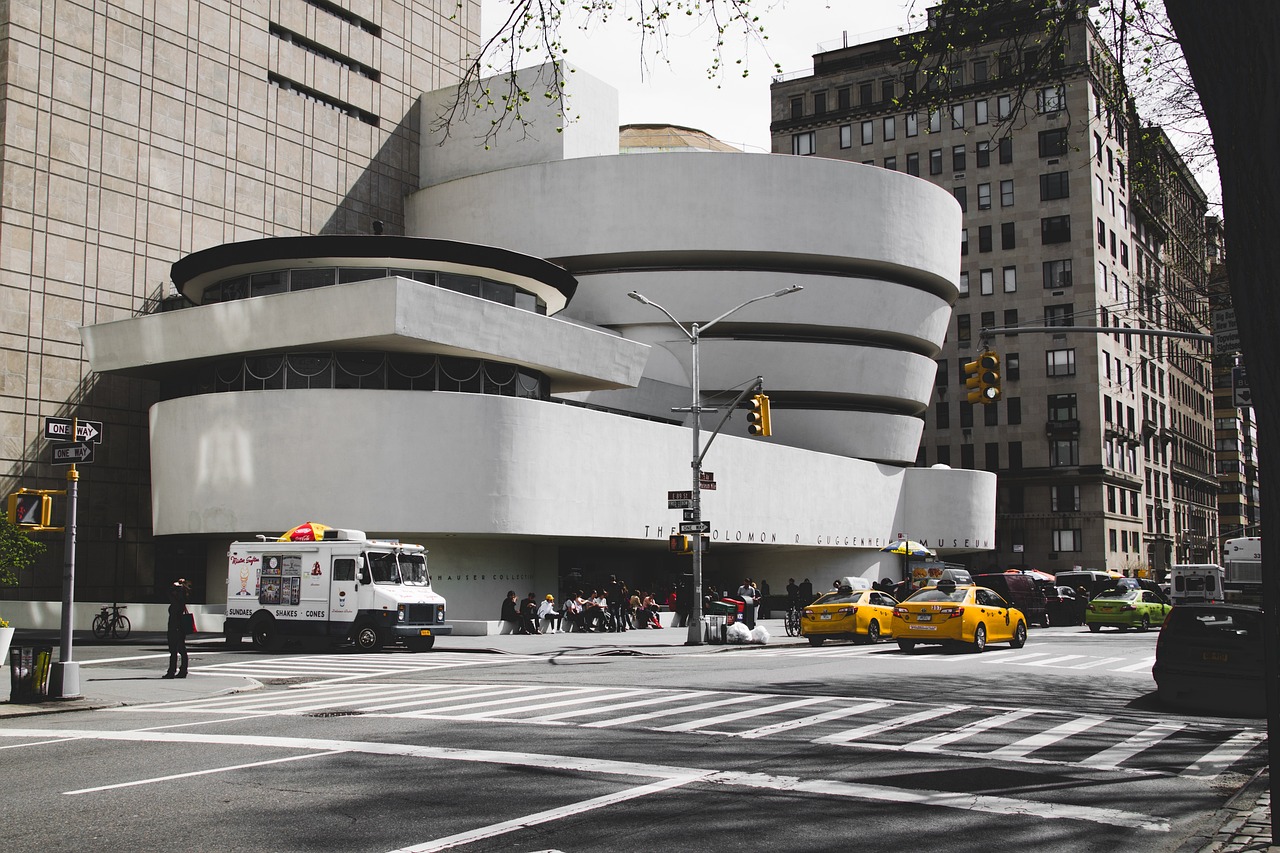
The Whitney Museum of American Art
Focused exclusively on American art, the Whitney showcases the country’s artistic evolution through its extensive collection and thought-provoking exhibitions.
Focused exclusively on American art, the Whitney Museum of American Art showcases the country’s artistic evolution through its extensive collection and thought-provoking exhibitions. Here, the vibrant tapestry of American creativity unfolds, offering visitors a captivating journey through the nation’s artistic identity.
The Whitney’s collection is a testament to the diversity and dynamism of American art. From the bold strokes of Abstract Expressionism to the social commentary of Pop Art, each movement and era is meticulously represented. As you wander through the galleries, you can witness the changing landscapes, both physical and metaphorical, that have influenced artists across generations.
One of the museum’s remarkable features is its commitment to contemporary art. It serves as a platform for emerging artists to showcase their work alongside established masters, fostering a dialogue between tradition and innovation. This dedication to the present moment ensures that the Whitney remains at the forefront of the art world, reflecting the ever-evolving narratives of American culture.
Beyond its permanent collection, the Whitney’s special exhibitions are a highlight, offering fresh perspectives and thematic explorations. These exhibitions often delve into pressing societal issues, sparking important conversations about identity, race, gender and politics through the lens of art. It’s a place where art serves not only as a mirror of society but also as a catalyst for change and understanding.
Visiting the Whitney is not just an aesthetic experience; it’s an immersion into the complexities of American history and society. The art on display reflects the aspirations, struggles and triumphs of a nation, making it a mirror through which visitors can contemplate their own roles in the ongoing American narrative.
In essence, the Whitney Museum of American Art is more than just a repository of paintings and sculptures; it’s a living testament to the artistic spirit of the United States. It’s a place where creativity knows no bounds, where the past and present converge and where the power of art to inspire, challenge and connect is vividly on display for all to explore and appreciate.
Looking for more insights? You’ll find them right here in our extended coverage: CUNY Arts – The City University of New York
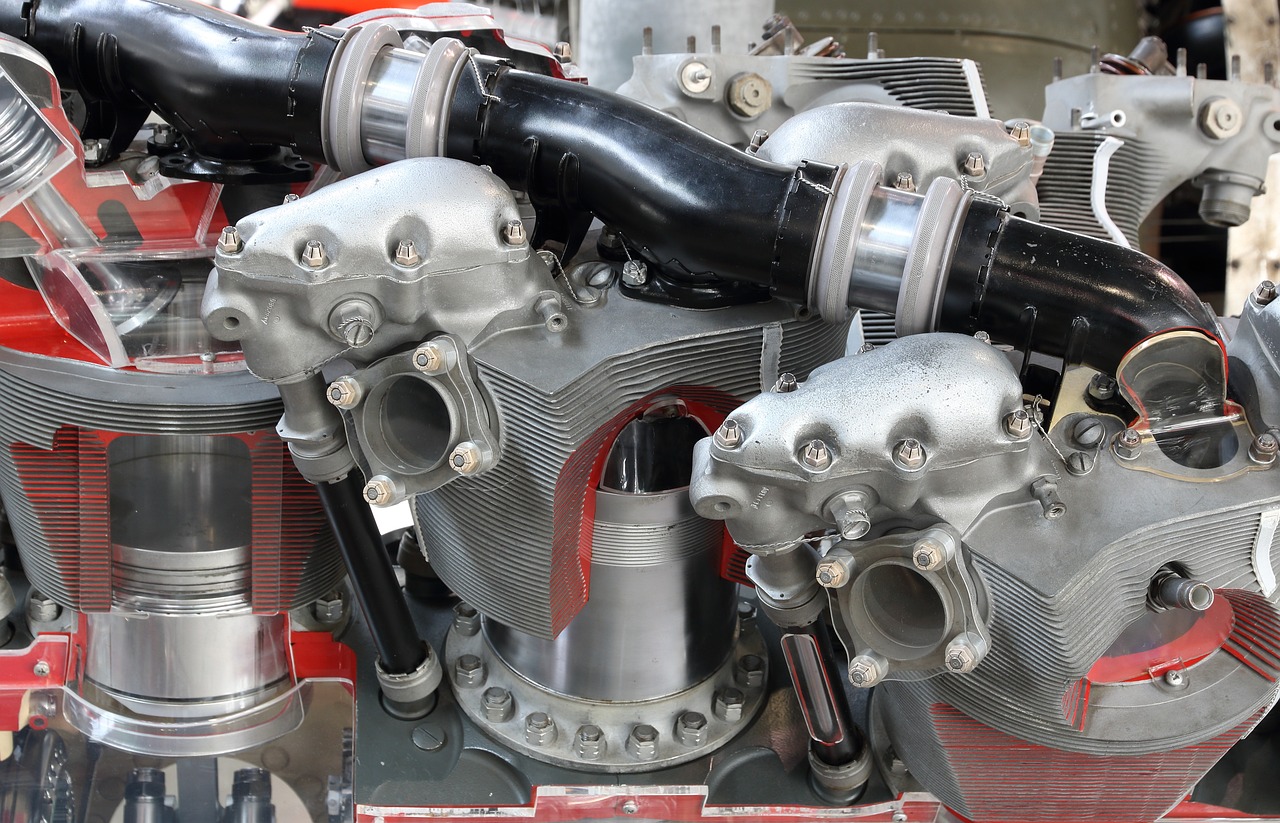
Theaters: Stages for World-Class Performances
Broadway, often referred to as the “Great White Way,” is synonymous with theatrical excellence, but New York City’s theater scene extends far beyond this iconic street. Some key theaters include:
Broadway, often referred to as the “Great White Way,” is synonymous with theatrical excellence, but New York City’s theater scene extends far beyond this iconic street. Some key theaters include:
The Public Theater: Located in the East Village, The Public Theater is a bastion of groundbreaking and socially relevant theater. It’s renowned for its commitment to diverse voices and innovative productions, often serving as a platform for emerging playwrights and directors.
The Beacon Theatre: Nestled on the Upper West Side, The Beacon Theatre is not only an architectural gem but also a stage for a wide range of performances, including concerts, comedy shows and special events. Its rich history adds to the allure of the shows hosted here.
The New Amsterdam Theatre: This historic theater, situated in the heart of Times Square, is home to Disney’s lavish productions like “The Lion King.” It’s an exquisite venue that seamlessly combines classic charm with cutting-edge technology.
St. Ann’s Warehouse: Located in Brooklyn, this avant-garde theater is celebrated for its adventurous programming, which often includes boundary-pushing works from both local and international artists. It’s a hub for those seeking unconventional and thought-provoking performances.
The Apollo Theater: Situated in Harlem, the Apollo is an iconic venue with a rich history of showcasing African American talent. From amateur night to legendary concerts, it has been a cultural touchstone for over a century.
The New Victory Theater: Positioned in the heart of the Theater District, this family-friendly venue specializes in productions for children and families. It provides a diverse array of performances that spark imagination and creativity in young audiences.
The Joyce Theater: Dance enthusiasts flock to The Joyce Theater in Chelsea to witness world-class contemporary dance performances. It’s an intimate space that allows audiences to feel a deep connection with the dancers and their artistry.
The Minetta Lane Theatre: Tucked away in Greenwich Village, this intimate venue has hosted an array of innovative and award-winning productions. Its cozy atmosphere provides a unique theater-going experience.
The Belasco Theatre: Another gem in the Theater District, The Belasco Theatre boasts a rich history and an ornate interior. It’s been home to numerous successful productions, showcasing the versatility of Broadway offerings.
These theaters, among many others, showcase the incredible diversity and vibrancy of New York City’s theater scene. From experimental performances in downtown lofts to grand productions in historic venues, the city offers a theater experience for every taste and interest, ensuring that the spirit of creativity and storytelling continues to thrive beyond the bright lights of Broadway.
To delve further into this matter, we encourage you to check out the additional resources provided here: The John F. Kennedy Center for the Performing Arts

Broadway Theaters
Broadway is home to some of the most famous theaters in the world, where acclaimed productions like “The Lion King,” “Hamilton,” and “Wicked” have dazzled audiences. The sheer variety of shows, from musicals to dramas, ensures there’s something for everyone.
Broadway, often referred to as the “Great White Way,” stands as an iconic symbol of the world’s theater mecca, offering a captivating array of performances that ignite the imagination and stir the soul. The district is not just a collection of theaters; it’s a pulsating heart of creativity and a testament to the enduring power of live performance art.
At the core of Broadway’s allure are its legendary theaters, each steeped in history and character. The lights of the marquees beckon theatergoers from around the globe to step inside these hallowed halls, where history and innovation intersect. The opulent interiors and ornate architecture of these venues transport audiences to a bygone era, enhancing the overall theatrical experience.
What truly sets Broadway apart is its ability to deliver a diverse range of productions, ensuring there’s something to cater to every taste and preference. From the rousing tunes and dazzling choreography of musicals like “The Lion King,” which takes you on a breathtaking journey to the African savanna, to the revolutionary storytelling and rap-infused brilliance of “Hamilton,” Broadway serves as a musical haven.
Yet, it’s not all about musicals. Broadway also hosts thought-provoking dramas, offering a profound exploration of the human condition. Productions like “Wicked” weave complex narratives, challenging our perceptions of good and evil and providing a fresh perspective on familiar stories.
The magic of Broadway isn’t confined to what happens on stage; it extends to the electrifying energy that permeates the streets. The district buzzes with anticipation, as audiences from all walks of life gather to share in the communal experience of live theater. The collective gasps, laughter and applause resonate through the night, forming a bond between performers and spectators that’s unlike any other art form.
Broadway is a place where dreams come to life and where aspiring actors, writers and directors strive to make their mark. It’s a showcase for the world’s top talent and a platform for groundbreaking creativity. As you step into the heart of this theatrical wonderland, you become part of a tradition that has spanned generations and continues to evolve, proving that the magic of Broadway is timeless and the world’s most famous theaters remain a beacon of artistic excellence.
Should you desire more in-depth information, it’s available for your perusal on this page: Participating Organizations | Culture Pass
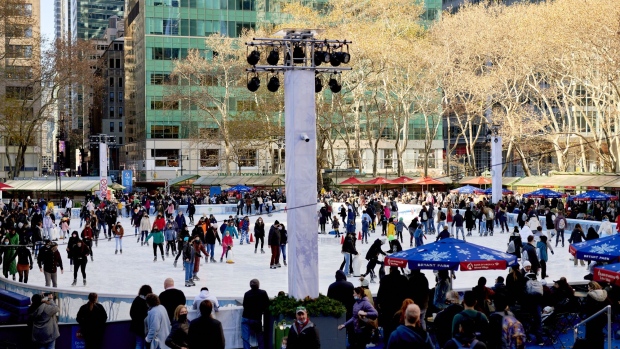
Off-Broadway and Off-Off-Broadway
These theaters offer a more intimate and experimental stage for emerging playwrights and actors. They’re a breeding ground for innovative and thought-provoking performances.
“These theaters offer a more intimate and experimental stage for emerging playwrights and actors. They’re a breeding ground for innovative and thought-provoking performances.
In the heart of a city known for its grand Broadway productions and iconic theaters, these intimate venues serve as incubators of creativity and artistic exploration. They provide a platform for emerging playwrights to test the boundaries of storytelling and push the envelope of theatrical conventions.
For aspiring actors, these theaters are a training ground where they can refine their craft and take risks in a supportive environment. The smaller, more intimate setting allows for a deeper connection with the audience, fostering a sense of vulnerability and authenticity in performances. It’s a place where actors can experiment with new techniques and interpretations, honing their skills and finding their unique voices.
Audiences, too, benefit from these hidden gems. Attending a performance in a smaller theater offers a more immersive and personal experience. It’s a chance to witness raw talent and fresh perspectives up close, often leaving a lasting impact and sparking meaningful conversations long after the curtain falls.
Moreover, these theaters are often at the forefront of pushing social and cultural boundaries. They tackle complex and thought-provoking themes that challenge conventional wisdom and invite audiences to question the status quo. In doing so, they not only entertain but also educate and inspire, contributing to the rich tapestry of artistic expression in the city.
In a world where commercial success can sometimes overshadow artistic innovation, these smaller theaters remind us of the power of creativity and experimentation. They are a testament to the enduring spirit of the performing arts, where passion, talent and the desire to tell compelling stories continue to thrive, unencumbered by the constraints of convention. So, the next time you find yourself in the city that never sleeps, consider exploring these hidden theaters, where the magic of theater is alive and well, waiting to captivate your imagination.”
Additionally, you can find further information on this topic by visiting this page: Museums and Cultural Institutions – IDNYC
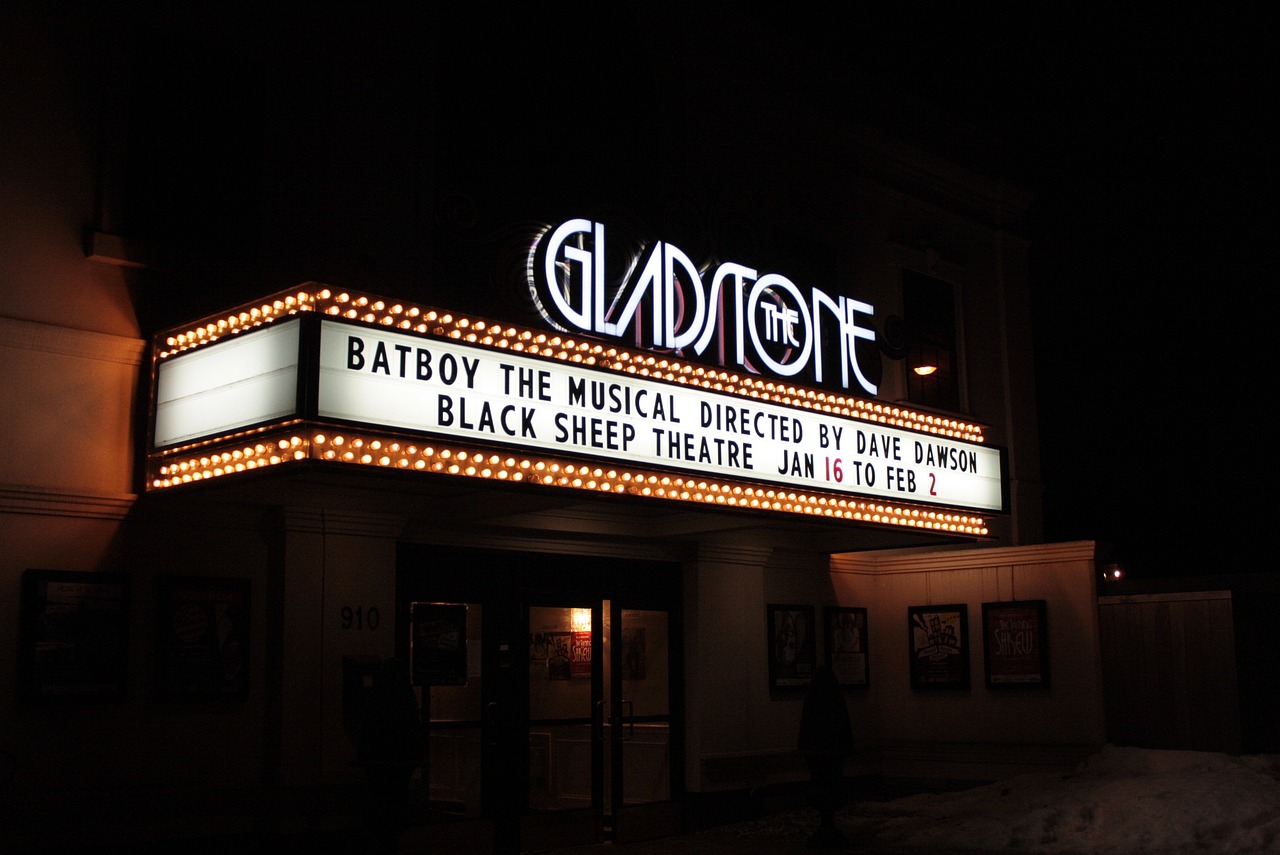
Lincoln Center for the Performing Arts
A hub for classical music, dance and theater, Lincoln Center hosts world-renowned ensembles like the New York Philharmonic and the Metropolitan Opera. The outdoor Josie Robertson Plaza is also a popular gathering place for cultural events.
Nestled in the heart of Manhattan’s Upper West Side, Lincoln Center stands as a cultural beacon, drawing enthusiasts of classical music, dance and theater from across the globe. This iconic institution, comprising numerous performance venues and artistic organizations, has long been synonymous with artistic excellence and innovation. Let’s delve deeper into what makes Lincoln Center a cultural treasure:
World-Class Performances: Lincoln Center is home to some of the most celebrated performing arts organizations in the world. The New York Philharmonic, renowned for its symphonic mastery, graces the stages of Lincoln Center with captivating orchestral performances that enchant music aficionados.
Operatic Splendor: The Metropolitan Opera, housed within Lincoln Center’s majestic Metropolitan Opera House, captivates audiences with grand opera productions that bring timeless stories and stunning vocal performances to life. It’s a venue where opera aficionados and newcomers alike can revel in the dramatic and musical prowess of world-class artists.
Ballet Brilliance: The New York City Ballet, another jewel in Lincoln Center’s crown, showcases the grace, athleticism and artistry of ballet dancers. Each season, this renowned company performs a repertoire that spans classical ballet to contemporary works, enchanting audiences with its fluidity and precision.
Theaters Galore: Lincoln Center boasts a collection of performance venues, each with its own unique charm and purpose. From the elegant David Geffen Hall, where symphonic masterpieces resonate, to the intimate Vivian Beaumont Theater, where Broadway productions shine, there’s a stage for every artistic expression.
Lincoln Center Festival: The center hosts the annual Lincoln Center Festival, a cultural extravaganza that welcomes international artists and performances. It’s a testament to Lincoln Center’s commitment to fostering global artistic dialogue and collaboration.
The Juilliard School: Adjacent to Lincoln Center, The Juilliard School is a prestigious institution renowned for nurturing young talents in music, dance and drama. Its students often grace Lincoln Center’s stages, providing a glimpse into the future of the performing arts.
Cultural Gatherings: The Josie Robertson Plaza, flanked by the iconic Revson Fountain, serves as a hub for cultural gatherings and events. Whether it’s a summer concert series, dance performances or public art installations, this outdoor space fosters a sense of community and artistic engagement.
Educational Initiatives: Lincoln Center offers educational programs and initiatives that engage young minds and foster a love for the arts. These programs inspire the next generation of artists, patrons and cultural enthusiasts.
Architectural Marvels: The modernist architecture of Lincoln Center, designed by notable architects such as Eero Saarinen and Philip Johnson, adds to the cultural significance of the complex. The juxtaposition of sleek lines and green spaces creates a visually striking environment.
Cultural Legacy: Lincoln Center’s rich history and legacy in the arts have made it an integral part of New York City’s cultural tapestry. It stands as a testament to the enduring power of the arts to inspire, educate and unite people from all walks of life.
Lincoln Center is not just a venue for performances; it’s a sanctuary where artistic excellence thrives, where traditions are honored and where innovation is celebrated. It beckons all who appreciate the beauty of human expression through music, dance and theater to partake in its grandeur and be touched by the magic of the performing arts.
For additional details, consider exploring the related content available here Lincoln Center for the Performing Arts
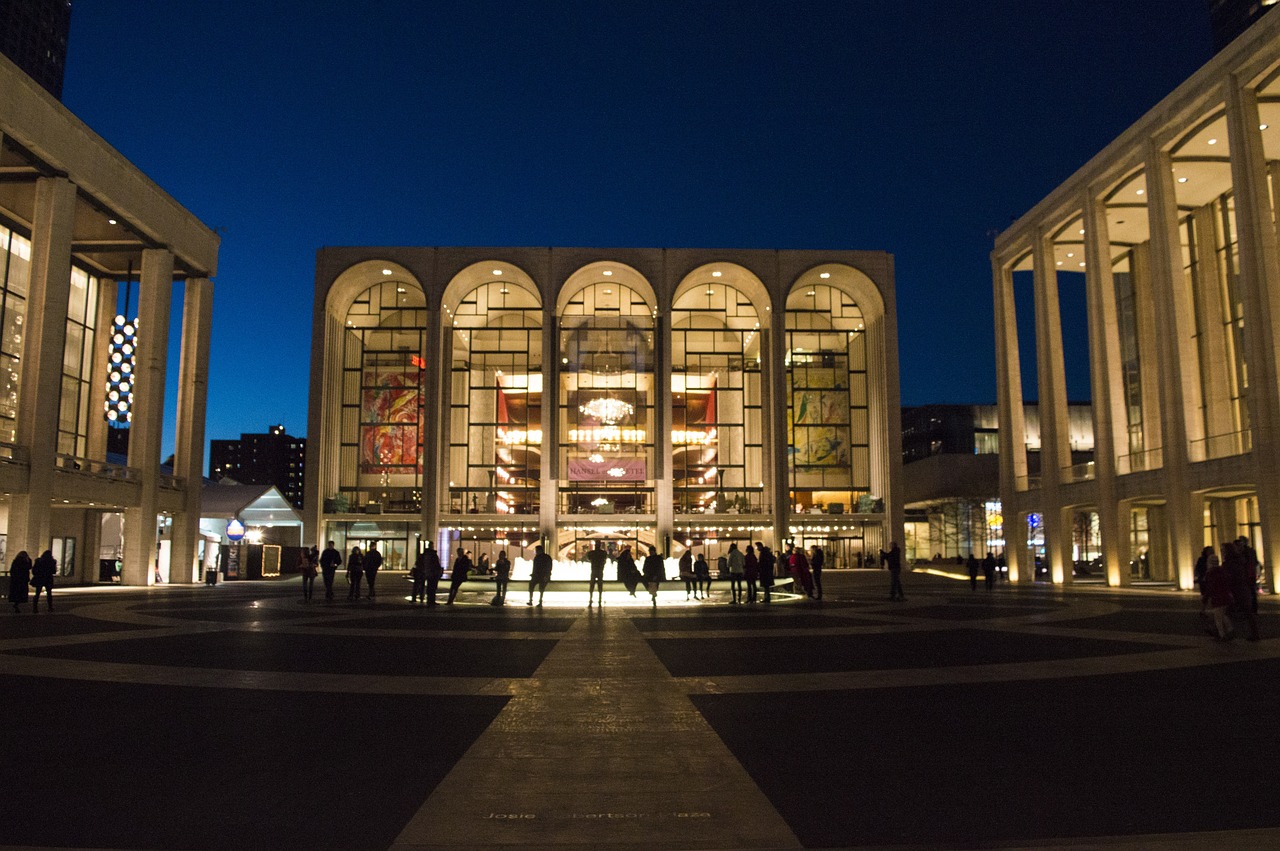
Galleries: Exploring Contemporary Art
New York City’s art galleries are essential in the ever-evolving world of contemporary art. These spaces provide artists with a platform to experiment and exhibit their work and visitors with an opportunity to engage with the latest artistic trends. Chelsea, the Lower East Side and SoHo are just a few of the neighborhoods where art galleries flourish.
New York City’s art galleries stand as vibrant hubs within the ever-evolving world of contemporary art, where creativity knows no bounds. These spaces serve not only as exhibition venues but as crucibles of artistic exploration, fostering a dynamic synergy between creators and their audience. As you delve into the city’s art scene, you’ll discover that these galleries are essential not just for artists but for the entire cultural ecosystem.
A Platform for Innovation: These galleries are the birthplaces of experimentation, where artists push the boundaries of their craft. From avant-garde installations to boundary-breaking sculptures, these spaces encourage artists to challenge convention, sparking conversations that shape the future of art.
A Canvas for Diversity: New York City’s art galleries reflect the kaleidoscope of voices and perspectives that define the contemporary art world. You’ll encounter artists from all walks of life, representing a wide range of backgrounds and cultures. This diversity breathes life into the art on display, inviting visitors to engage with narratives both familiar and novel.
A Nexus of Dialogue: Visitors to these galleries are not mere spectators but active participants in a discourse with the art and its creators. The gallery experience goes beyond passive viewing; it’s a dialogue that encourages viewers to ponder, interpret and critique. It’s an opportunity for art enthusiasts to connect with the zeitgeist of the moment and contemplate the complex issues of our time.
Neighborhoods of Expression: New York’s neighborhoods are microcosms of artistic expression. Chelsea, with its high concentration of galleries, is a contemporary art lover’s paradise. The Lower East Side exudes a gritty, experimental spirit, while SoHo retains its historic charm as a haven for both established and emerging artists. Each neighborhood offers a unique flavor and an ever-evolving canvas of creativity.
A Glimpse of Tomorrow: These galleries are windows into the future of art. Emerging talents often make their debut in these spaces and curators are skilled at identifying trends that will shape the art world in the years to come. For visitors, this means encountering art that challenges preconceptions and expands horizons.
Connecting with the Past: Amidst the tide of contemporary works, many galleries pay homage to art’s rich history. Exhibitions featuring classic and modern masters remind us that today’s artistic journey is built upon the foundations laid by those who came before.
Supporting Local and Global Talent: These galleries play a pivotal role in nurturing local artists while also connecting them to the global art scene. They facilitate the exchange of ideas, fostering collaborations that transcend borders and cultures.
In essence, New York City’s art galleries are dynamic ecosystems where the pulse of contemporary art beats at its strongest. They are windows into the creative minds shaping our world, offering visitors the chance to witness the transformative power of art in real-time. Whether you’re a seasoned art connoisseur or a casual enthusiast, these galleries invite you to immerse yourself in the ever-evolving tapestry of human expression, where each stroke of paint or sculpted form is a testament to our collective creativity and imagination.
For a comprehensive look at this subject, we invite you to read more on this dedicated page: Best Museum Exhibits in NYC to Explore in 2023

New York City’s cultural institutions, from its museums that showcase history and art, to its theaters that bring captivating stories to life and its galleries that push the boundaries of creativity, are an integral part of the city’s identity. They inspire, educate and entertain, making the city a place where culture is not just celebrated but continually reinvented. Whether you’re a lifelong resident or a first-time visitor, exploring these cultural gems is an invitation to immerse yourself in the vibrant tapestry of human expression that defines New York City’s artistic landscape.
“New York City’s cultural institutions, from its renowned museums like the Metropolitan Museum of Art and the Museum of Modern Art, to its historic theaters like the Broadway stages and Lincoln Center and its avant-garde galleries in Chelsea and beyond, are the beating heart of the city’s identity. They serve as pillars of inspiration, education and entertainment, ensuring that New York remains a global cultural capital where innovation and tradition coexist harmoniously.
These cultural bastions not only celebrate the past but also embrace the future. They are dynamic, evolving spaces that encourage artists and creators to push the boundaries of creativity. Whether you’re wandering through the halls of the Guggenheim, taking in a Broadway performance or discovering emerging artists in a SoHo gallery, you’re participating in the ongoing narrative of artistic evolution that defines New York City.
As a resident, these cultural gems provide a constant source of enrichment, offering opportunities for lifelong learning and engagement. For first-time visitors, they offer a profound introduction to the city’s soul. Exploring these institutions is an open invitation to dive into the vibrant tapestry of human expression that New York City proudly showcases. Each visit is a chance to be moved, inspired and forever connected to the cultural spirit that makes this city truly exceptional.”
Additionally, you can find further information on this topic by visiting this page: Anthropology 101 2002 CSN Essentials of Cultural Anthropology …
More links
You can also read more about this here: Museums and Cultural Institutions – IDNYC
